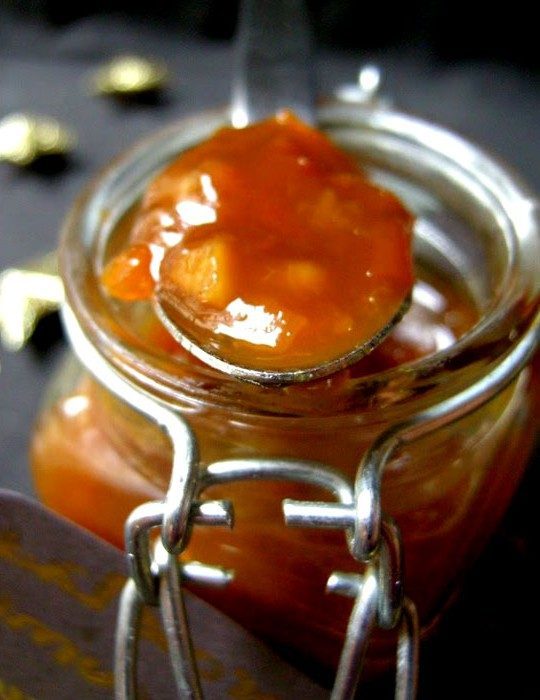
But it’s not always easy to do. A jam or jelly is obtained by cooking fruit with an equivalent weight of sugar, an acidic ingredient and pectin. It is a matter of dosage and cooking method. Sometimes, recipes are not always explicit, or your stove doesn’t heat as the recipe developer intended, few elements can disturb the good process. So to avoid ending up with a semi-disaster, here are a few tips if things don’t turn as you expected:
My jam is too thick
If your jam turns out too thick, here’s what to do: Before you put it in the jars, just heat 1 or 2 cups of grape juice (or any other fruit juice or neutral taste, like apple) to boiling. Gradually pour the fruit juice and stir it in until you obtain the desired consistency, then go back to canning.
My jam is too runny, what to do?
If your jam turns too runny, it certainly lacks pectin. Avoid putting more sugar based pectin bought in supermarket because it could make your jam way to sweet. use sugar less pectin or better: quartered apples instead, there core contains more pectin, and you can remove them easily after cooking. Re-heat the jam you have to fix, a good boil is necessary to blend acidity, pectin and sugar together.
You can also use agar agar, but use it cautiously; no more than 1g for 1kg fruit. This vegetal setting agent is very strong, it’s used for delicate jelly dessert, panacotta and other culinary preparations.
My jam is too sweet
When you use sweet fruit like quince, kiwi, peach, or pear, you can add an acidifying agent such as lemon juice to prevent the formation of sugar crystals. The lemon juice will also give an attractive colors and a firmer texture when cooked. You can also use currant juice, or a little vinegar. Be careful not to use low-sugar pectin when a recipe calls for pectin because you may end-up almost doubling the volumes of sugar!
My jam is overcooked
If your preparation is overcooked, try adding a little boiling water and stir well to melt the sugar crystals. Note that what is cooked cannot be uncooked. The hardness is due to sugar that caramelize. So if you don’t succeed in melting the jam with liquid, think about another use, like cookies filling, blending with cottage cheese…
About the cooking time and preparation
Contrary to a persistent idea, jam doesn’t need to cook more than 30 minutes. It is important to stir the jam throughout cooking to prevent it from setting completely. Think that cooking times on recipes are always estimates. When the recipe gives an amount of time for you to let the jam cook, know that is only an approximate time. You have to watch out and use your judgement. One of the most important things when making jam is make sure you have all your ingredients premeasured into cups and ready to add, before you even begin. It is important that you add the ingredients at the right time and not over cook the jam.
Related recipes:

